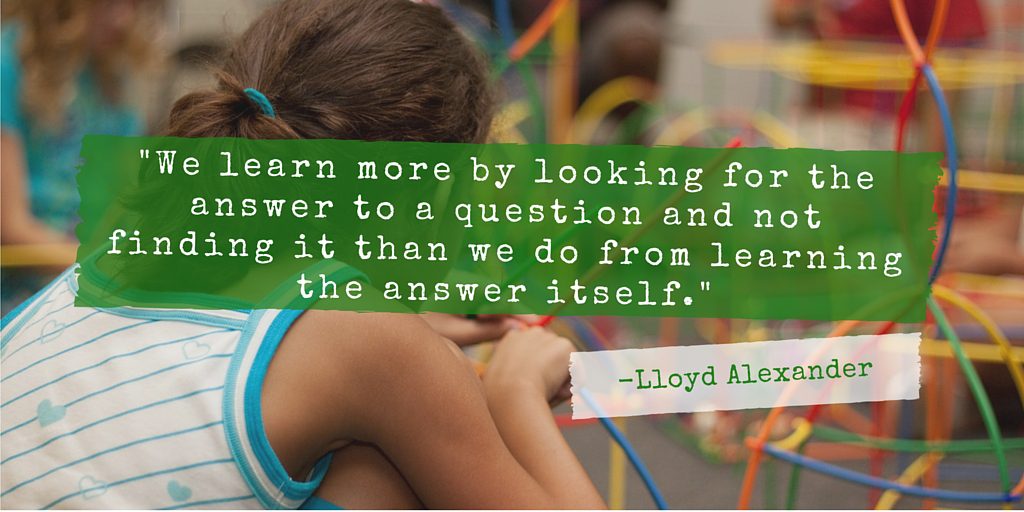I love this quote. I think it has many layers…many applications within education and life in general. At its’ core is what Aristotle contended so many centuries ago, “that human beings are curious by nature.” Bottom line, we learn best when we are engaged, when we have to discover and make meaning from that discovery. Our great teachers know this. They inspire. They involve the student. They ask powerful, leading questions. They put learning into action. Too often education relies on traditional instructional methods, ones that discourage natural inquiry, ones that rely on students learning content because they have been told the information or shown how something works. Let’s just say it, “Students don’t learn because we tell them to; they learn because they want to.”
When given the right environment, students will flourish. Give them something that interests them and they will enthusiastically take responsibility for their own learning. Through a process of exploration, investigation, reflection, and application we can tap into a student’s natural curiosity about the world around them — help them construct knowledge in a way that is meaningful — we can teach them how to learn. Oh, how glorious it is to watch a student apply those same learning strategies in different contexts. So often we see students answer more questions than they had when they started searching.
How does this apply to implementing educational technologies in the classroom? First, I think we need to reflect on HOW we are using technology in the classroom. Teachers may not have control over how much technology their students have access to or the frequency with which the students access that technology, but they can control what the students do with the technology. Teachers frame how students engage with the technology to access the content. Ask yourself whether you take advantage of all available opportunities for your students to use technology as creators vs. consumers. How can your students use these tools in powerful ways to construct knowledge? How can your students use these tools in powerful ways to present and share what they have learned — within your class and to the global educational community? I am not advocating that teachers stop using content apps that drill and review altogether. I am advocating for intentional teaching that includes the use of technology tools to create, collaborate, communicate, and think critically.
Dr. Ruth Okoye, Director of K12 Initiatives for The Source for Learning, shared with me another perspective on the application of this quote to effective technology implementation in the classroom. Dr. Ruth mused that there is something that we prove to ourselves through the attempt to answer a question. Often when something is hard to answer we develop a ‘stick-to-it-iveness’ – a sense of perseverance. Additionally, when students can’t find the answer immediately, they have to learn how to use multiple sources. And, when you go to multiple sources there is often conflicting information which, in turn, encourages students to learn how to determine what is a good source.
Embrace your students’ innate curiosity. Help them find comfort and wonder in the journey to a question’s answer.


